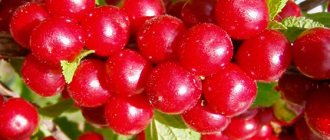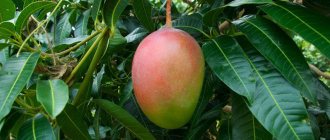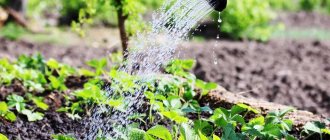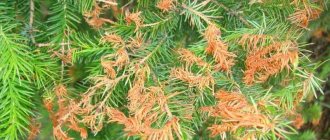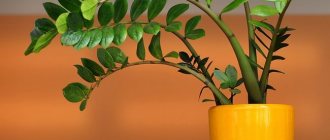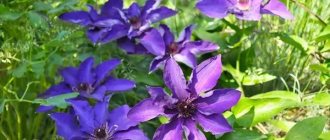186
Felt cherry got its name due to the fact that its foliage and fruits are covered with light fluff. The birthplace of this amazing culture is the Land of the Rising Sun, China. Today, this cherry variety is in great demand in our country, thanks to its tasty fruits, relatively low growth, resistance to frost and the ability to use this tree in landscape design.
That is why more and more novice gardeners are interested in how to plant felt cherries and how to care for them. Below we will consider in detail such a variety as felt cherry, what advantages this crop has and what you need to know about its cultivation.
What does a felt cherry look like?
Felt cherry belongs to the genus of plums, and it got its name because of its increased “fluffiness”. Its branches, the back of the leaves and even the fruits are covered with soft pile, reminiscent of felt.
Brief description of felt cherry:
- Bush. The plant is not tall. The crop also grows in the form of trees, but they are not taller than 3 m. The average height is 1.5 m. The trunk is covered with dark, gray-brown bark. The leaves are small, green, oval in shape. The edges of the leaves are serrated. Fruiting begins when the plant reaches 1 m in height.
- Flowers. Small, can be white or pink. They bloom for about two weeks, starting in mid-May. A flowering tree looks like a large and lush bouquet - its flowering is so abundant.
- Fruit. The berries are red, orange or pale pink and even black. They are smaller in size than ordinary garden cherries. On average, a berry weighs about 2 g. The largest-fruited varieties produce fruits weighing up to 5 g. The taste is sweet, with minimal or no sourness.
Main varieties
The crop has self-fertile and partially self-fertile varieties - they can bear fruit without pollination by other varieties. But there are also self-sterile ones - other varieties must be planted next to them for pollination.
Early varieties:
- Natalie. Vigorous bush. One tree produces a harvest of up to 7 kg. The fruits are dark red, sweet, with slight acidity. The average weight of the fruit is 4-4.5 g. The pulp is cartilaginous.
- Princess. Low bush - up to 1.5 m, with a crown of medium density. The fruits are bright pink, the flesh is sweet and juicy. The maximum fruit weight is 3.5 g. Up to 10 kg of harvest can be harvested from one plant.
- Fabulous. Wide spreading bushes are covered with dark red berries. The average fruit weight is 3-4 g. Productivity is 8-12 kg per plant.
Mid-season varieties:
- Dark-skinned. A low-growing bush - up to 1.2 m tall, with a dense and spreading crown. This variety’s fruits “sit” on relatively long stalks – up to 8 mm. The berries are not large, dark burgundy, weighing 2-2.5 g. In the first years, the yield reaches 4-5 kg per bush, but every year it increases.
- Alice. Low shrub with strong density. The fruits are dark burgundy, weighing up to 3.5 g. The taste is sweet, with a slight sourness. In good years, you can collect 8.5 kg of berries from a bush.
Late varieties:
- Ocean Virovskaya. A medium-thick bush up to 1.6 m high. The average weight of burgundy fruits is 3.6 g. Their pulp is juicy and dense, the taste is sweet and sour. Productivity – up to 9 kg per plant.
- Summer. A compact bush of medium density reaches a height of 2 m. The berries are light red, with thick and juicy pulp. Weight – 3-4 g. Harvest per bush – up to 8 kg.
- Damanka. This is one of the best late varieties. The tree grows up to 2 m in height. The berries are dark burgundy, weighing about 5 g. Up to 10 kg of fruits are collected from one plant.
When buying a felt cherry seedling, it is often impossible to determine its type of pollination. To be on the safe side, gardeners always take at least two varieties. If you take them with different ripening periods, you can double the duration of fruiting.
Advantages and disadvantages of felt cherry
Benefits of felt cherry:
- Healthy and tasty berries. Fresh felt cherry fruits contain a lot of vitamin C and organic acids. Active polyphenols are especially valuable - they strengthen capillaries.
- Suitable for making jams, compotes, preserves.
- Early ripening - the plant bears fruit in the second year after planting.
- Friendly maturation.
- Once ripe, the berries do not spoil or fall off.
- This plant can be used for decorative purposes - it is especially beautiful during flowering and fruiting.
- Hardy and undemanding, felt cherry can be planted on slopes.
- Planted in a row, the bushes create dense and picturesque hedges.
- Frost resistance – tolerates frosts up to 40 °C without negative consequences.
- Drought resistance - can tolerate, without much damage to the crop, long-term lack of watering.
- Compact - takes up minimal space on the site.
- The fruits ripen earlier than ordinary cherries - about 2 weeks.
- Simple agricultural technology - the plant does not require complex care.
- Does not produce root shoots.
- Common cherry is suitable for pollination.
- Resistance to many diseases. Immunity to coccomycosis.
Disadvantages of felt cherry:
- Short lifespan - only about 10 years. But, thanks to proper pruning, the lifespan of the plant can be increased to 20 years.
- It is difficult to separate the stone from the pulp.
- Due to their delicate structure, the fruits are poorly stored and transported.
- It needs regular pruning, otherwise the crown thickens and the yield drops.
- May be affected by moniliosis. This fungal disease is also called fruit rot.
Beneficial properties of fruits and their use
The fruits of this plant are very useful fresh, and they are also used to prepare various desserts, drinks, and make preparations for the winter. The fruits are included in various confectionery products, and they are also frozen and dried.
It must be said that since the berries have a delicate texture, they are not stored for a long time, so they are processed freshly picked.
In addition to nutritional value, the fruits contain a lot of vitamins and microelements. These are vitamins C, B, P, PP, anthocyanins, catechins and flavonols, malic acid, fructose. They contain more iron than apples.
Thanks to such an abundance of useful substances, the fruits of this plant can rightfully be called medicinal. Frequent consumption of them strengthens capillaries, improves digestion and appetite, as well as metabolism. The threat of heart attacks and strokes is reduced because the substances contained in the fruits normalize blood pressure.
Planting felt cherries in open ground in spring
It is best to plant felt cherries in early spring - before the buds open. To get a good harvest, you need to plant at least three felt cherries. Only self-fertile varieties can be planted alone - Ogonyok, Tsarevna, Skazka, Vostorg.
For felt cherries Alice, Natalie, Osennyaya Virovskaya and other self-sterile cherries, it is necessary to plant other varieties nearby.
Lighting
The culture is photophilous, so choose an area with good lighting for planting. To produce good yields, the plant must receive a lot of sunlight.
With a lack of sun, felt cherry fruits grow small and deformed. If a gardener expects abundant harvests, seedlings should not be planted in shaded areas.
Favorable neighbors
The best neighbors for felt cherries, in addition to other varieties, are sweet cherries and common cherries. But when planting close, it is important to prevent moniliosis. Rowan berries, grapes, and hawthorn are also considered good neighbors for this crop.
Felt cherry does not grow well near coniferous trees - such proximity should be avoided.
Soil selection
Soil requirements:
- Soil composition. The crop grows best on light, fertile sandstones and loams.
- Acidity. The plant prefers non-acidic soils. With increased acidity, the soil must be deoxidized. To do this, slaked lime or dolomite flour is added to the soil in spring or autumn. The amount of substances added depends on the degree of acidity of the soil.
- Humidity. Well-drained soils are needed. Peat bogs and wetlands are not suitable.
On overly moist soils, felt cherries lag behind in growth, bloom and bear fruit poorly.
Optimal time for planting
The optimal planting time in the middle zone is April. In the Urals and Siberia, planting is postponed to a later date, taking into account the regional climate. In the northwestern part of Russia, you should not start planting before May.
A plant planted in the spring has time to grow stronger and develop a root system over the summer. It tolerates winter more easily than seedlings planted in autumn.
Preparing the planting hole
The pit for planting is prepared in advance. Its dimensions:
- width – at least 60-70 cm;
- depth – no more than 50 cm.
For one hole you will need:
- rotted manure - 3 buckets;
- phosphorus – 50 g;
- potassium – 25-30 g;
- lime – 500-600 g.
All components are thoroughly mixed and poured into the pit. Or vice versa - they pour everything into a pit and mix it there. The pit with the soil mixture is watered with 2-3 buckets of water.
Planting felt cherries: step-by-step diagram
The seedlings are planted in pre-prepared holes, located at a distance of 2-3 m from each other. The planting depth of the plant should be equal to that at which it grew in the nursery.
The procedure for planting felt cherry seedlings:
- Cut off 20 cm of the root and the top of the seedling if it dominates other shoots.
- Place the seedling in the hole so that the root collar is 3-4 cm above the soil level after planting.
- Cover the roots of the plant with a soil mixture of the same composition as at the bottom of the hole.
- Carefully, with little force, compact the soil.
- Pour water - a couple of buckets is enough. Watering should be plentiful.
- Mulch the soil.
The root system of felt cherry is very sensitive to moisture. Even when planting seedlings on hills, you should not deepen them too much so that the measles neck does not rot.
Features of caring for felt cherries
In order to get good harvests from year to year, you will have to take a little care of the felt cherry. If the felt cherry is planted for hedges or other non-harvest purposes, it will require minimal attention. It is enough to water in particularly dry summers and prune to give a beautiful appearance.
Watering
Young trees love abundant watering, but overwatering should not be allowed. The main thing is to water the plants regularly, maintaining optimal humidity. Watering is important only in the first year of life; in subsequent years, cherries are watered only during dry periods.
Watering is stopped 2-3 weeks before harvest to prevent the fruits from cracking.
Top dressing
Fertilizers are applied twice a year. The first feeding is carried out only in the second year, since the seedling receives enough nutrients during planting - everything necessary is brought into the planting hole.
Fertilizer application stages:
- In spring, complex fertilizer with nitrogen is applied. It is scattered along the edge of the tree trunk circle - you must definitely step back from the trunk. Along with spring feeding, the plant is watered and loosened. Composition of spring feeding per bush:
- humus – 5 kg;
- ammophoska – 30 g;
- potassium sulfate – 20 g;
- superphosphate – 50-60 g.
- In August, a complex potassium-phosphorus fertilizer that does not contain nitrogen is applied.
Tillage
The soil is loosened carefully, trying not to go deeper than 5 cm, so as not to damage the root system. To retain moisture in the soil and prevent the growth of weeds, tree trunk circles are mulched. Sawdust, peat or other suitable material can be used as mulch.
Trimming
This procedure is necessary for the health, decorativeness and productivity of the tree.
Trimming rules:
- On an annual seedling, all branches are cut so that their length does not exceed 40 cm.
- In the second year, the shoots are cut by 1/3. The length of the branches should not exceed 60 cm.
- Sanitary pruning is carried out regularly - twice a year or more often.
The bush leaves 3-4 skeletal branches, the rest are lateral. This pruning pattern will prevent thickening and promote good fruiting.
A thickened plant loses productivity. The lower shoots, being in the shade, do not receive light; berries do not set or ripen on them. But insects feel great in the shade - this is where plant damage always begins.
Harvesting
The first harvest is harvested 3 years after planting. At first the harvests are small - about 4 kg. It’s convenient that the berries ripen together, so you can harvest the entire harvest in one go.
The fruits are collected without stairs or stepladders, since the plant is not tall. The berries are picked by tilting the branches - they are quite flexible and do not break. The berries grow thickly, so harvesting takes place quickly.
If the fruits have to be transported, then it is better to pick them early - as soon as they are formed and acquire the shade characteristic of mature fruits of a particular variety.
Watch a video about the intricacies of caring for felt cherries:
Shrub pruning
Special attention should be paid to the pruning and crown formation of this bush crop. The central part of the plant must be thinned out annually, leaving no more than 12 of the strongest shoots. Without such a procedure, the quantity and quality of the harvest will be significantly reduced.
You also need to care for annual shoots of felt cherry. They are shortened by a third, but only if the total length exceeds 60 cm (Figure 7).
Figure 7. Pruning is necessary to maintain crop yields
Anti-aging pruning is carried out every five years. It is considered mandatory, since without periodic rejuvenation the plant will simply stop bearing fruit. With this pruning, only the central trunk and peripheral skeletal branches are left. Some of the side shoots are removed “to the ring”. As a result, new young shoots form, and all old branches located above them should be removed.
Spring pruning of frozen bushes is carried out in a similar way, however, if there are no damaged shoots, sanitary cleaning should be minimal.
Felt cherry propagation
To grow felt cherries on your plot, it is not necessary to buy seedlings. There are other ways to propagate this crop, all of them are simple and accessible even to novice gardeners.
Seeds
This is a very simple, but the longest path to harvest. It takes years before a seed grows into a tree with fruit.
How to propagate felt cherry by seeds:
- Remove the seeds from the fruit.
- Select a suitable container, fill it with moistened sand and place the seeds in it. Leave until autumn.
- In mid-October, plant the seeds in open ground - in a pre-prepared area. Bury the seeds 4-5 cm. The interval between adjacent seeds is 3 cm.
- In the spring, when seedlings appear, thin out the plantings - leave the strongest plants.
- After 1-2 years, plant the seedlings in permanent places.
If a felt cherry grown from a seed is not replanted and is planted immediately in a permanent place, it will grow and bear fruit better. But then they put several seeds in one hole, then leave one plant, the strongest one.
Horizontal layering
This method is most widespread among gardeners. It allows you to simply and quickly propagate the variety you like - a fruit-bearing plant is obtained within 3-4 years of life.
Reproduction order by layering:
- In the spring, select a shoot from the propagated plant. It should be located at the bottom and be well developed.
- Bend the shoot to the ground and secure with staples.
- Sprinkle soil on the part of the layer lying on the ground.
- Tie the part of the layer remaining at the top to a peg.
When autumn comes, check to see if the cuttings have taken root. If the shoot has given good roots, then it can be cut off from the mother plant and planted in a permanent place. If the roots are not sufficiently developed, it is better to postpone planting until spring.
Cuttings
Gardeners usually use this method to obtain a crop that carries the varietal properties of the parent bush.
Growing from cuttings:
- Prepare cuttings by cutting off shoots of the 2nd or 3rd level of branching.
- Make the top cut straight, and the bottom cut obliquely. The length of the cutting is 15 cm.
- First add a mixture of soil, peat and sand to the planting site.
- Deepen green shoots by no more than 1 cm, woody shoots by 2 cm.
- Water the cuttings and cover with film. Sprinkle the edges of the film with soil. If it's hot, water the soil around the planting with cuttings.
If planting is done correctly, the cuttings will take root within 30 days. Green shoots will turn into a fruit-bearing tree in the 3rd year, woody ones - in the 2nd year.
Propagate by cuttings and layering
Propagation by cuttings
| |
Reproduction by layering
|
Diseases and pests
Felt cherry is unpretentious, so the biggest problems when growing it are related to diseases and pests. But they are also few in number, and with proper prevention they can be avoided altogether.
The main diseases of felt cherry and measures to combat them:
| Name of the disease | Features of the disease | Control measures |
| Moniliosis | Fungal disease. All vegetative parts of the plant are affected. The affected parts are removed and destroyed. | Treated with fungicides Horus or Topaz. |
| Pocket disease | This fungal disease affects the plant at the fruit set stage. Causes fruit deformation. Leads to crop losses. | In early spring, spray with copper sulfate or 3% Bordeaux mixture. |
For the prevention of diseases, Bordeaux mixture 1% is used. Felt cherries are sprayed until the flower buds swell. Spraying is repeated after flowering, at the very beginning of fruit set.
The most common pests of felt cherry:
- pocket mite;
- scale insect;
- aphid;
- cherry weevils;
- leaf roller.
Watering the plant with hot water before the buds open helps control mites. In the fight against other pests, insecticides show themselves best - “Karbofos”, “Aktara” and others. Traditional methods against these insects are ineffective.
Treatment with insecticides cannot be carried out on the formed ovary.
Felt cherries can be damaged by mice and other rodents. To prevent them, the trunk of the plant is covered with branches - spruce, juniper, and reed are suitable.
Reviews from gardeners
Antonina, 35 years old, amateur gardener, Khabarovsk region. The first time I planted a felt cherry, taking part of a bush from a neighbor in the country. There were a lot of fruits until the pocket disease attacked. I transplanted it behind the fence and began to trim it like an ornamental bush - right along the green branches. As a result, the “pockets” disappeared.
Arseny, 40 years old , summer resident, Belgorod region. I tried to propagate for several years, but the neck kept rotting due to the fact that it was planted incorrectly. There is also a constant problem with pollination, one tree blooms earlier, another later, because of this there are few berries. The culture is truly unpretentious, but there are nuances of planting and fruiting.
The beauty of the felt cherry lies not only in its ability to grow in any conditions, but also in the simplicity of agricultural technology. This unpretentious plant will decorate your plot, feed you with sweet fruits, and at the same time will not require special attention - even a novice gardener can grow it.
Growing conditions
Nutritious soil is best suited for growing the plant, in particular loam and sandy loam soil with neutral acidity. Heavy soil or peat is not suitable for growing Chinese cherries.
Advice! If there is no required soil composition on the site, the prepared holes are filled with brought soil.
Felt cherry, planting and caring for which is to create conditions as close as possible to natural conditions, does not like waterlogging. With excess moisture, the plant slows down its growth, blooms poorly and does not set fruit. This is often the cause of death of the felt cherry tree.
When choosing a place to plant a seedling, preference should be given to the sunniest areas, since the tree does not tolerate shade.
Despite the fact that most varieties are self-fertile, Chinese varieties are planted in groups (at least 3 individuals).
